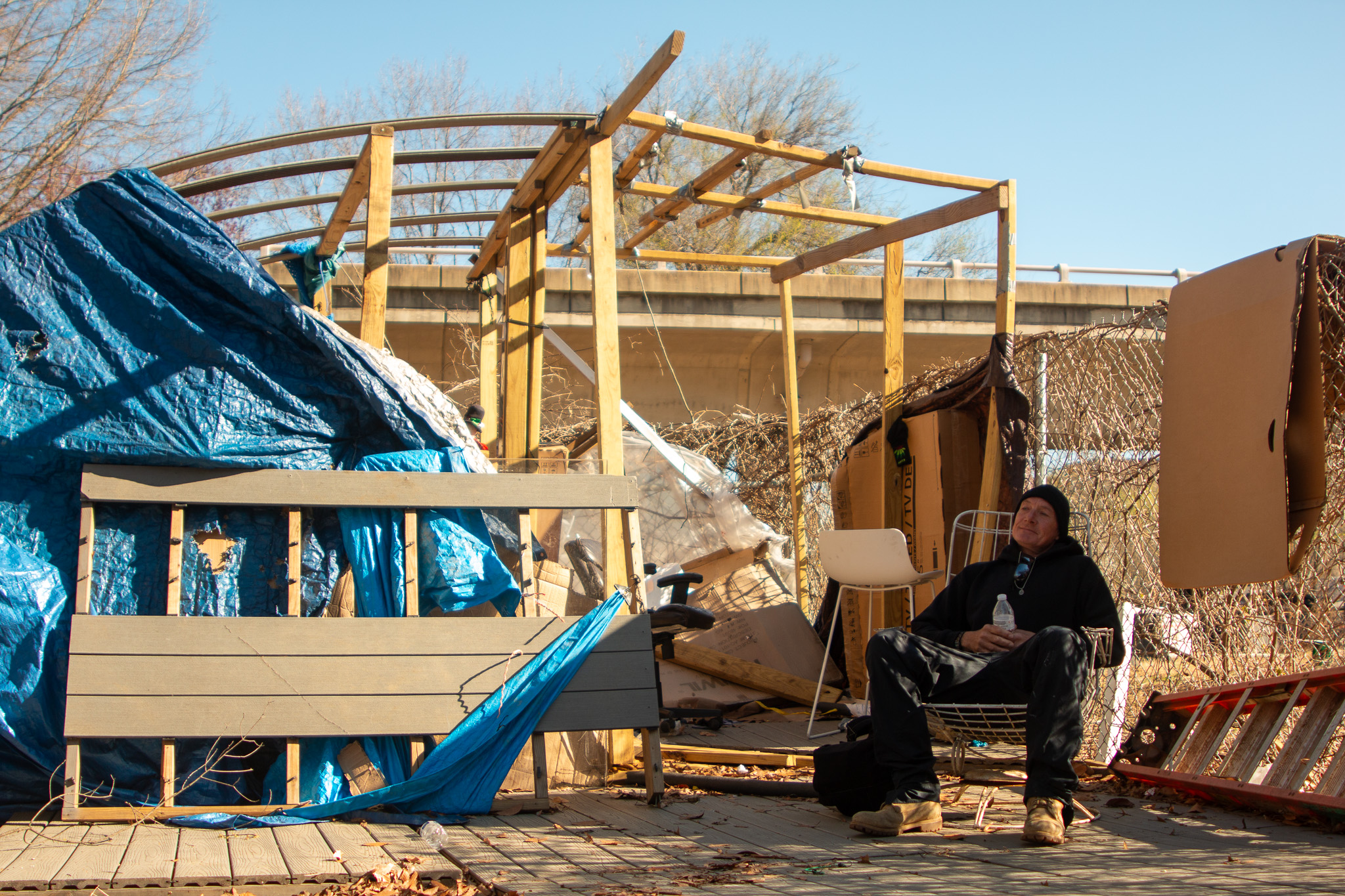This is collection of clips for Street Sense Media with the help of my fellow reporters—check back for updates and new photos every two weeks. Featuring reporting by Franziska Wild, Carolina Bomeny, Tierra Cunningham, & Madi Koesler.
Encampment Updates: Cat and mouse game continues as the same residents experience repeated closures
Excerpt: D.C. has continued to close encampments at a rapid rate. In late April and early May, they scheduled nearly three encampment clearings every week. Many of these encampments had been previously closed, and residents expressed anger and frustration at what is starting to feel like a game of whack-a-mole.
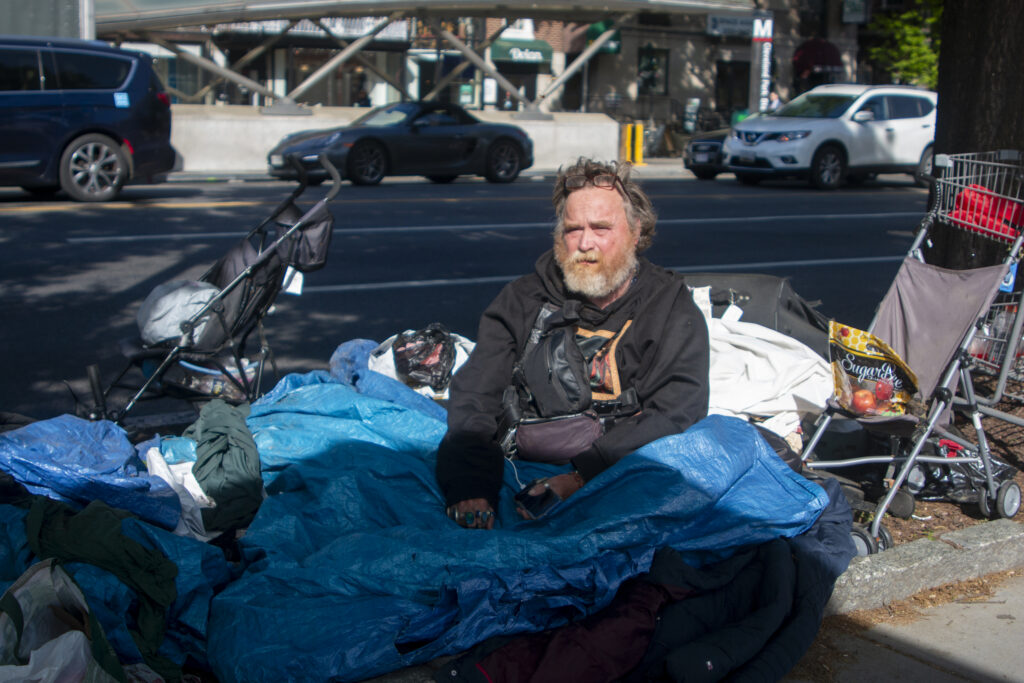
Scott sits at his encampment beside the Cleveland Park Metro Station. April 23 was the second time this year his encampment was cleared by DMHHS.
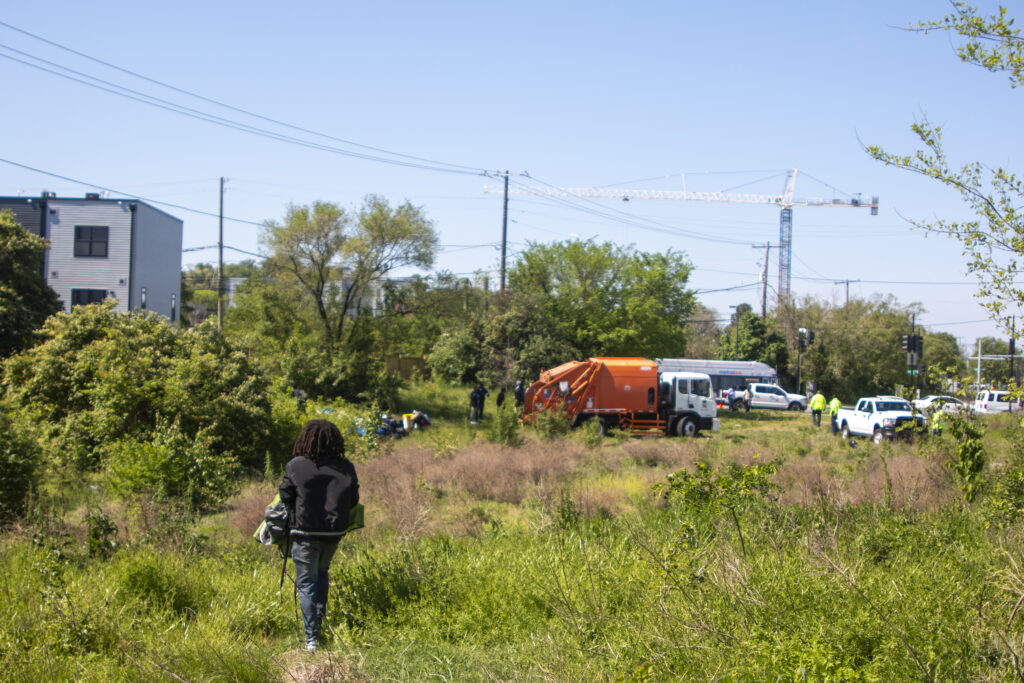
With his tent, an encampment resident walked back to his encampment before the clearing, upset and unsure of where he would go next.
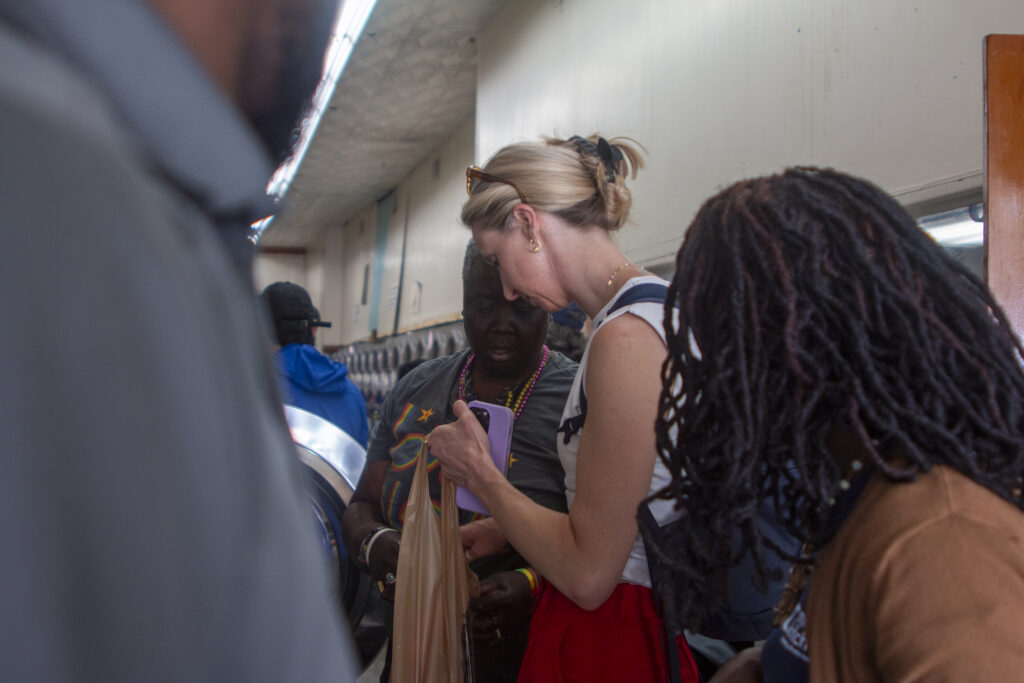
Heather Bernard stands beside Jo Furmanchik, Outreach Specialist from the Washington Legal Clinic for the Homeless, who holds a bag of laundry supplies. Before heading to tour the Aston, Jo and two other outreach workers from District Bridges and Miriam’s Kitchen helped Bernard wash her belongings so they could be eligible for DMHHS storage.

Bernard looks out the window, pointing out apartment buildings she likes as she Uber’s to the Aston.
Shelter staff don’t always offer translation. It’s hurting non-English speakers.
Excerpt: Content warning: This article includes descriptions of sexual assault.
Kiara Meza, a pregnant 24-year-old mother of two, crawled around on the floor in pain. She had tried to convince the staff at her city-funded youth housing program to call an ambulance, but they couldn’t understand her Spanish, and didn’t find a way to translate, she said.
Meza, a Peruvian native, primarily speaks Spanish. She enjoys music, dreams of being an esthetician, and is a devoted mother. Since she arrived in D.C. a year ago, she’s bounced from shelter to shelter. At most of them, she said, none of the staff spoke Spanish. The language barrier was often frustrating, but when she developed a severe kidney infection in January, it became dangerous.
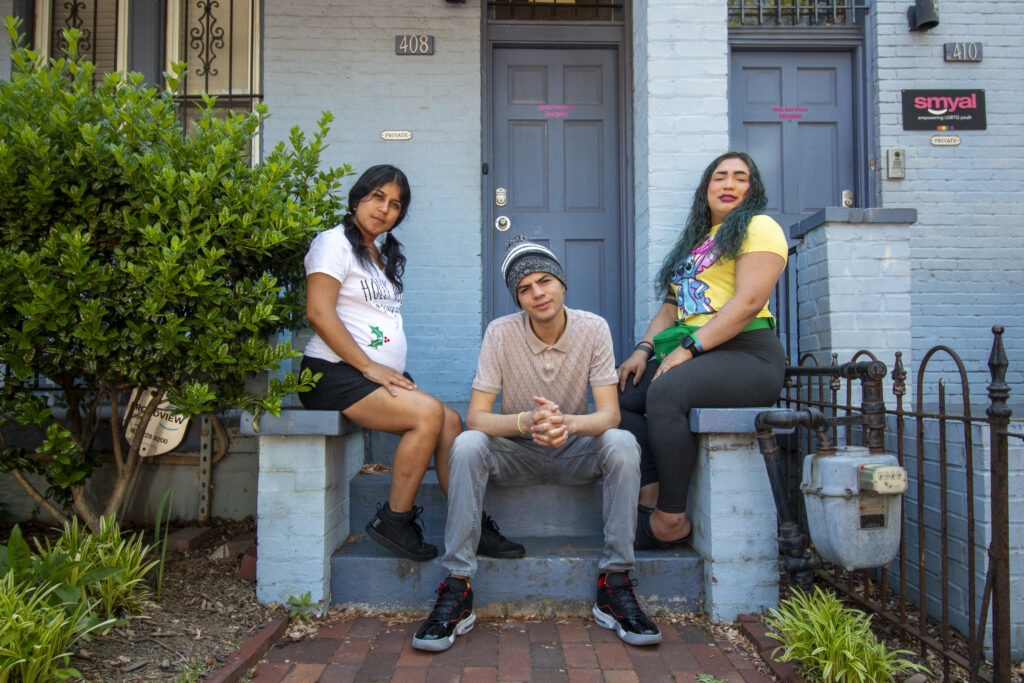
Left to right: Kiara Meza, Davyd Abreu, and J, outside a SMYAL facility.
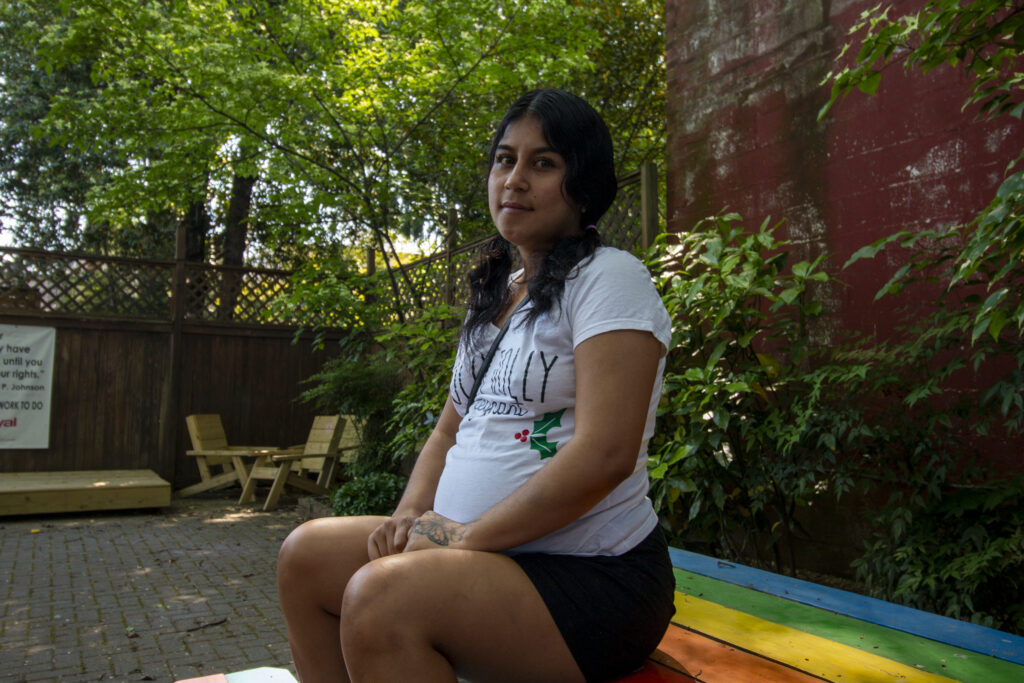
Encampment Updates: Closures continue as residents shuffle around the city
Excerpt: By the time I pushed Z, in her wheelchair, back to their encampment on April 10, city officials had already used a knife to slash their tent open, searched through their belongings, and thrown their furniture into garbage trucks. The couple, who asked to be identified by their initials for their safety while living outside, had just left the hospital to try to save their belongings.
But they were too late. After waiting an hour and 47 minutes for the couple to return, staff from D.C.’s Office of the Deputy Mayor for Health and Human Services (DMHHS) began removing the encampment at the 1000 block of Howard Road in Anacostia.
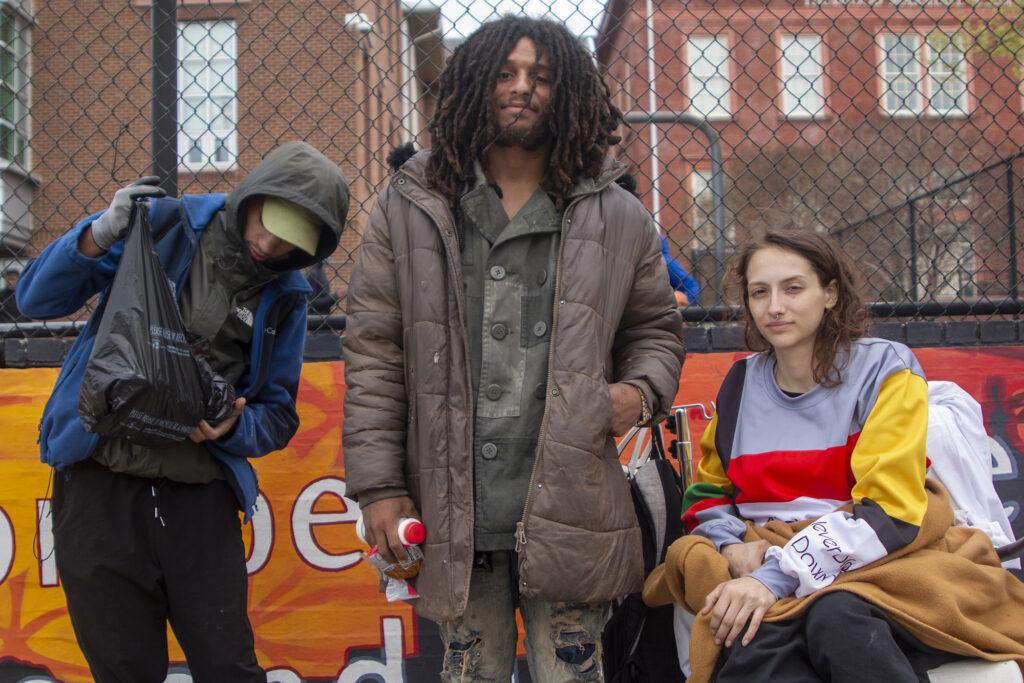

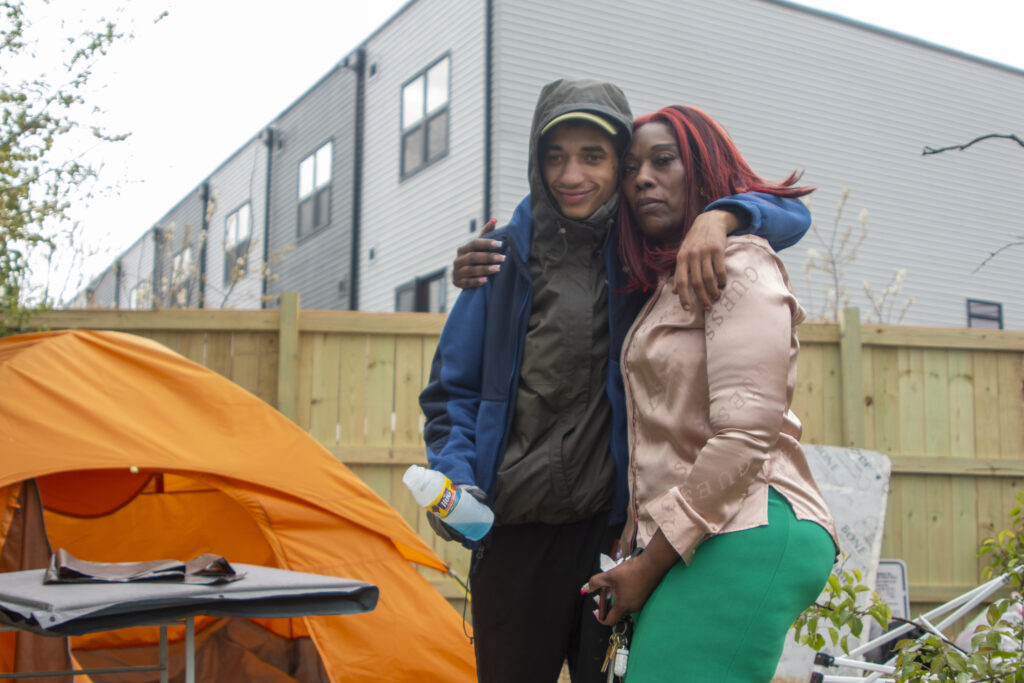
ANC Commissioner Robin McKinney and her friend Mikey pose in front of his encampment before it was cleared on April 10.
Her encampment was closed the most in 2024. “Why are you doing this?” she asks.
Excerpt: Heather Bernard feels the city won’t leave her alone. Nearly every month, she packs up her clothes, toiletries, bedding, and other essentials and moves around the corner or a block down from the orange storefront where she normally sleeps. Sometimes, she might lose valuable items in the moving process. But she always returns.
D.C. cleared the encampment Bernard lives at in Mount Pleasant 14 times in 2024 and once so far in 2025, largely because of its proximity to the road, the city says. This makes her encampment the one D.C. closed the most; the next most frequently cleared location was closed only eight times in 2024. Each time, after city officials are done clearing her encampment, Bernard returns, even though she’s not supposed to — she says she doesn’t have anywhere else to go.
“They’ll say, we wouldn’t like for you to be here,” she said. “And I said, look, you’re failing me because I’m waiting for my home [at] my home.”

Encampment updates: As closures increase, so does frustration and displacement
Excerpt: As Denise Ann Allman packed up her belongings, she motioned a Street Sense reporter over.
“This is like the fifth time I moved in a month. I’m not the one making the mess, they are,” she said, eeferring to the Office of the Deputy Mayor for Health and Human Services (DMHHS), the city agency that manages encampments and was closing Allman’s at 26th and L Streets on April 2. As she spoke, the frustration in her voice was clear.
Residents like Allman are feeling the toll of D.C.’s decision to increase the rate of encampment closures. In late March and early April, DMHHS closed five encampments, leading to the involuntary hospitalization of one resident and the displacement of at least 15 other people.

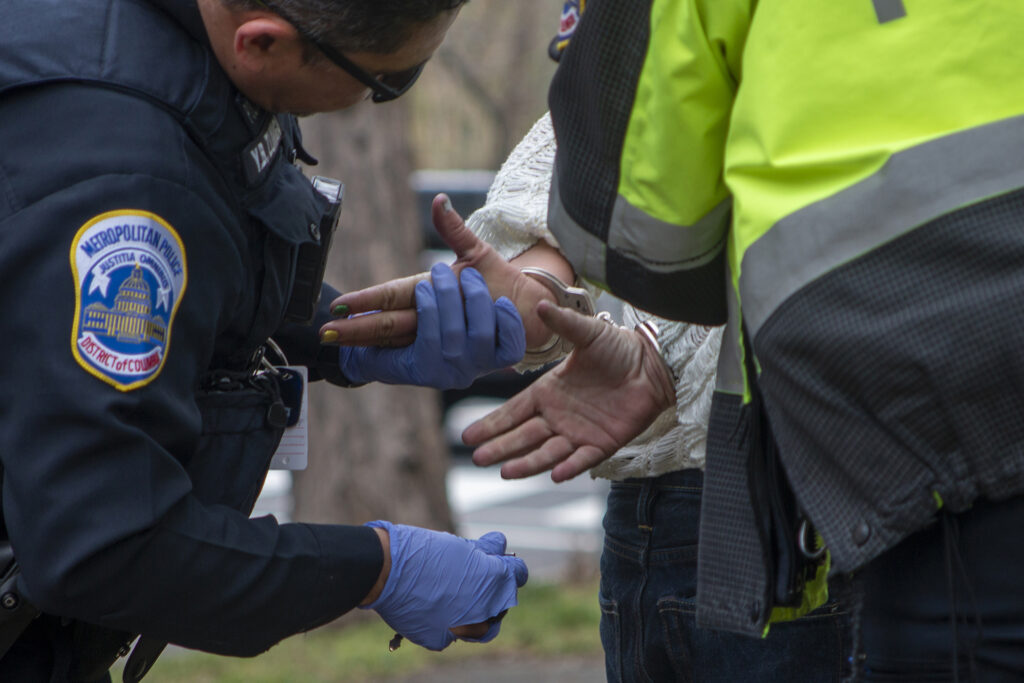
Encampment updates: Back-to-back closures cause “anguish”
Excerpt: As D.C. speeds up the pace of encampment closures, some people experiencing homelessness in Foggy Bottom were forced to move twice in three days, the second time with little notice. Meanwhile, city officials have begun offering some encampment residents spots at the Aston, a new non-congregate shelter in the neighborhood.
In mid-March, D.C. closed six encampments throughout the city, including one of the biggest encampments, Whitehurst Hill, on March 12. Two days after closure, on March 14, city officials displaced many of the former Whitehurst Hill residents again, this time from the spot they’d moved to across the street. Residents had less than 24 hours’ notice for the second closure, in what the Deputy Mayor for Health and Human Services (DMHHS) calls an “immediate disposition.”
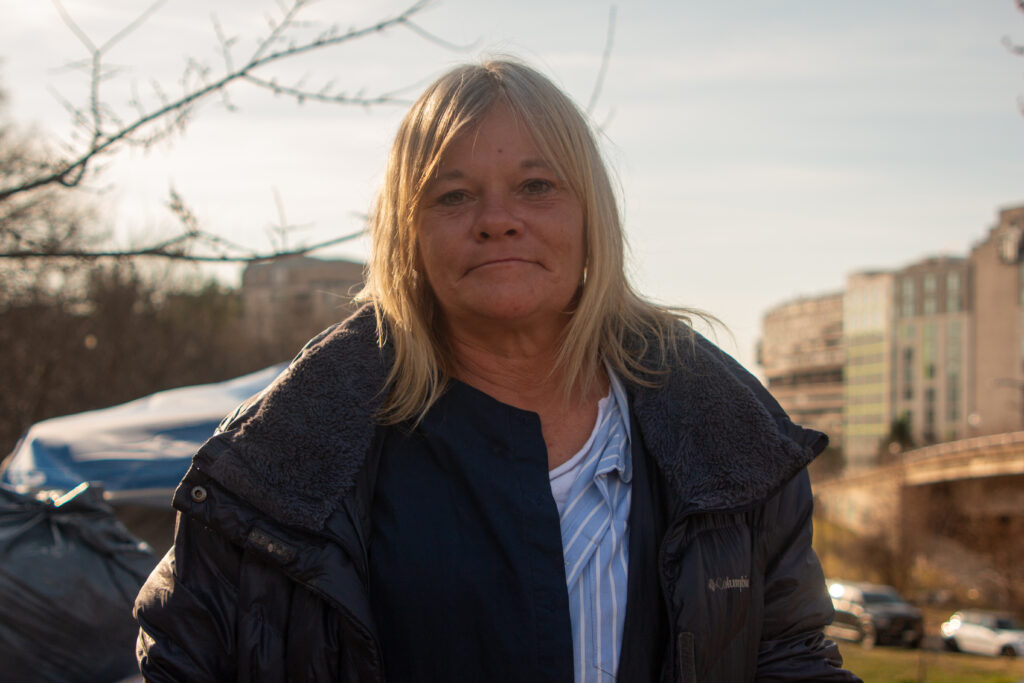
Rebecca Riley poses before her friend’s tent while helping them move from Whitehurst Hill to the DDOT lot across 27th Street.

Jesse Wall poses in his tent while gathering his things to move from Whitehurst Hill to the DDOT lot across 27th Street. Wall was among the residents forced to move twice in three days.
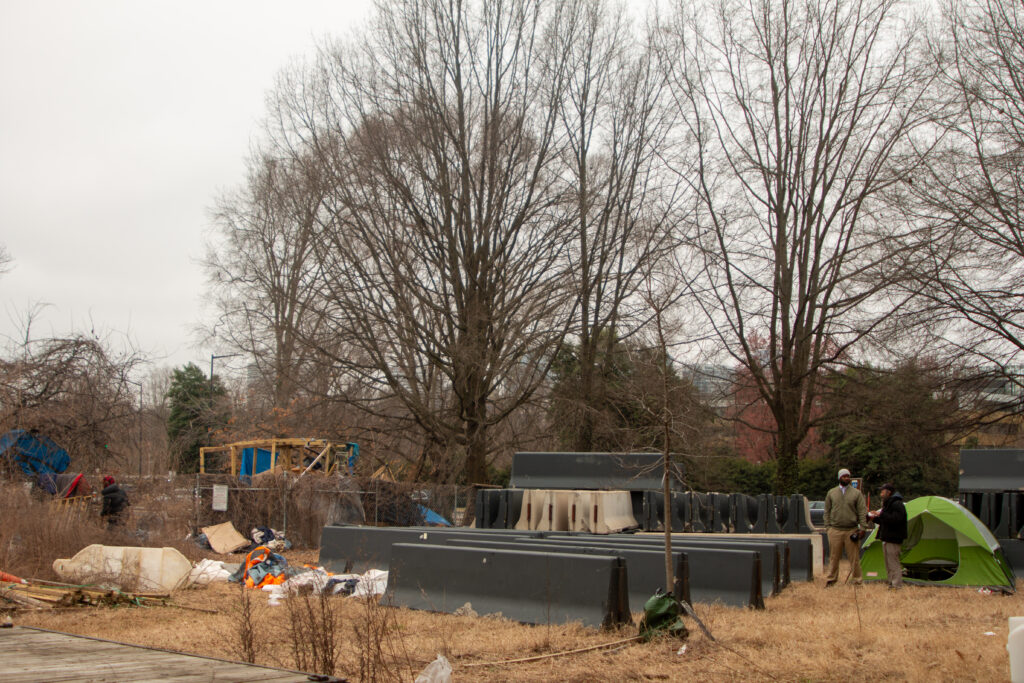
Charles Young, Community Safety Coordinator from the Georgetown Business Improvement District, checks in with a resident the morning of the immediate disposition. They stand next to concrete barriers that Jamal Weldon told residents DDOT needed to access.
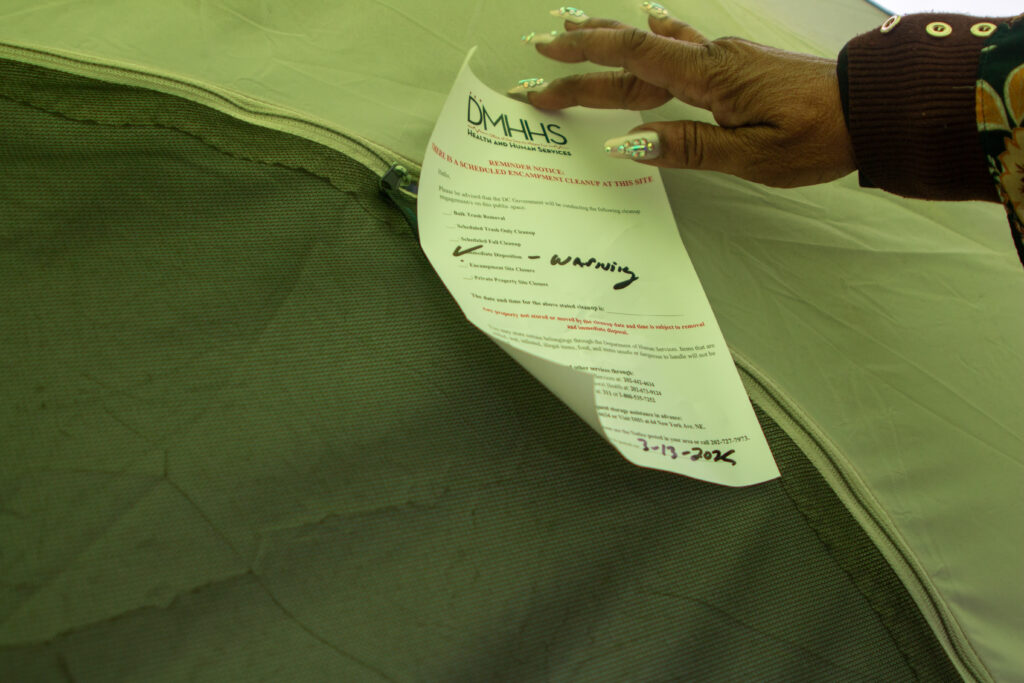
Miss Kim shows where she found a sticker sign from DMHHS notifying her of the immediate disposition of her tent located at the DDOT lot across from Whitehurst Hill. “WARNING” is handwritten on the sign, but DMHHS protocol does not outline a warning system.
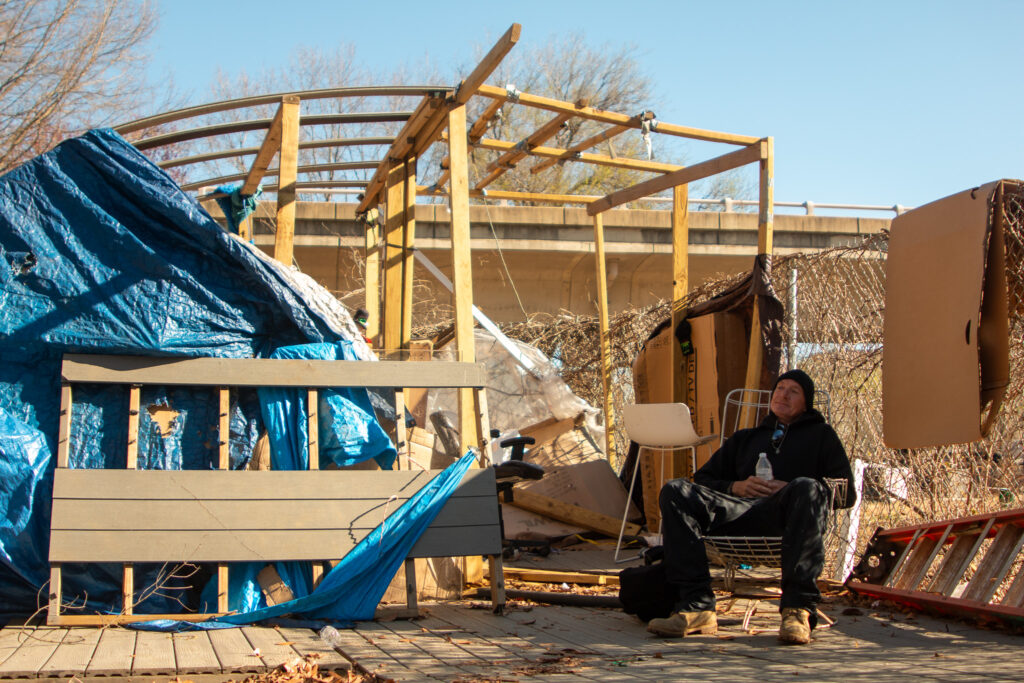
Larry sits in his rocking chair outside the house he built for himself near Virginia Ave. on the morning of the third closure. He accepted a bed at the Aston following the Whitehurst Hill closure and said he was at peace with his structure being demolished by DMHHS now that he’s starting fresh.
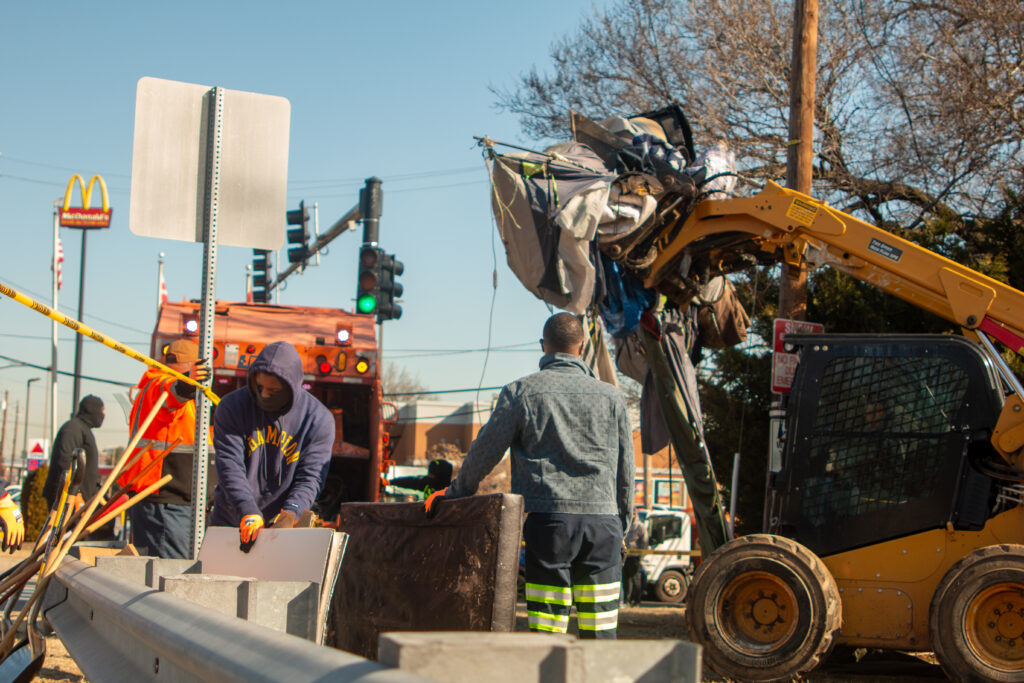
DPW workers work to clear the Brentwood at 1899 9th St. encampment by carrying items stacked along the crash barrier and piloting the CAT track loader to a garbage truck.
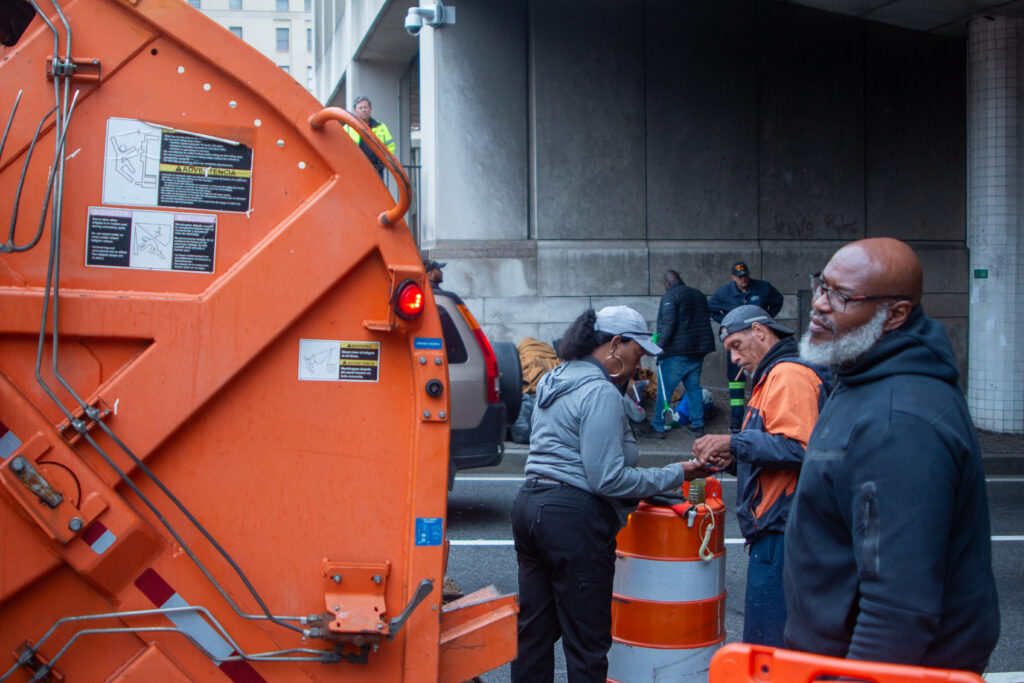
Two DPW staff members look for a lighter to smoke while the DMHHS encampment team and biohazard workers inspect a pile of blankets and various items across the street at the 2nd and D Street NW encampment closure.
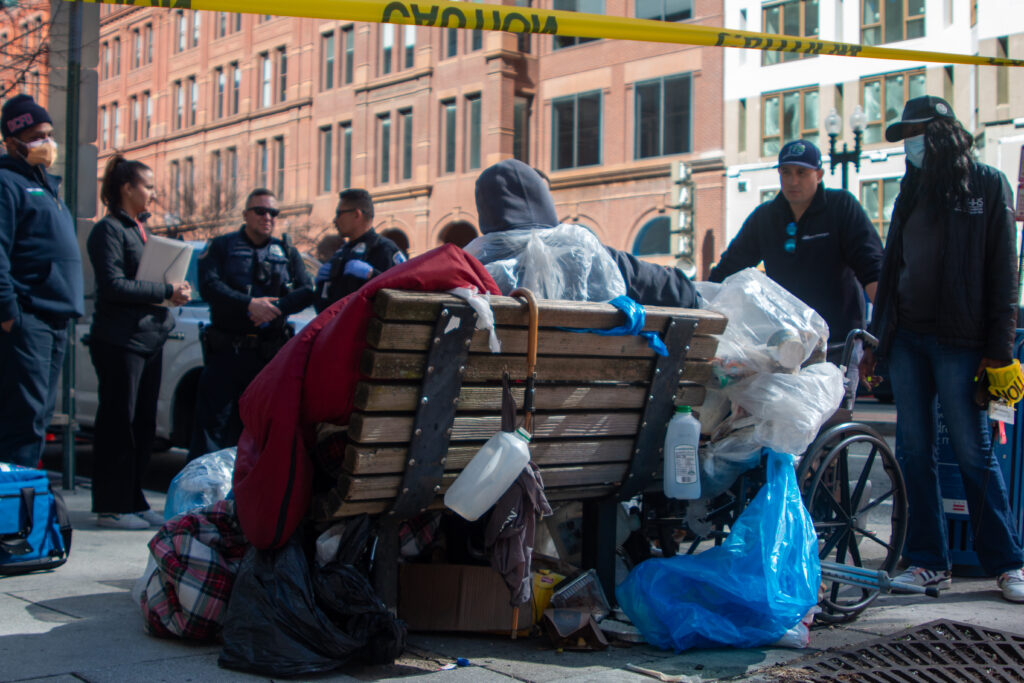
The resident from the New York Avenue encampment sits at his bench, going through his items and speaking to a Pathways outreach worker while surrounded by MPD officers, DBH workers, DMHHS workers, and EMS workers.
Encampment updates: D.C. closes Foggy Bottom encampment following Trump social media post
Excerpt: Following a social media post by President Donald Trump, D.C. closed a large encampment next to the E Street Expressway with only a day’s notice. The city also closed two other encampments in late February and early March, and has scheduled nearly a dozen more closures for the coming weeks.
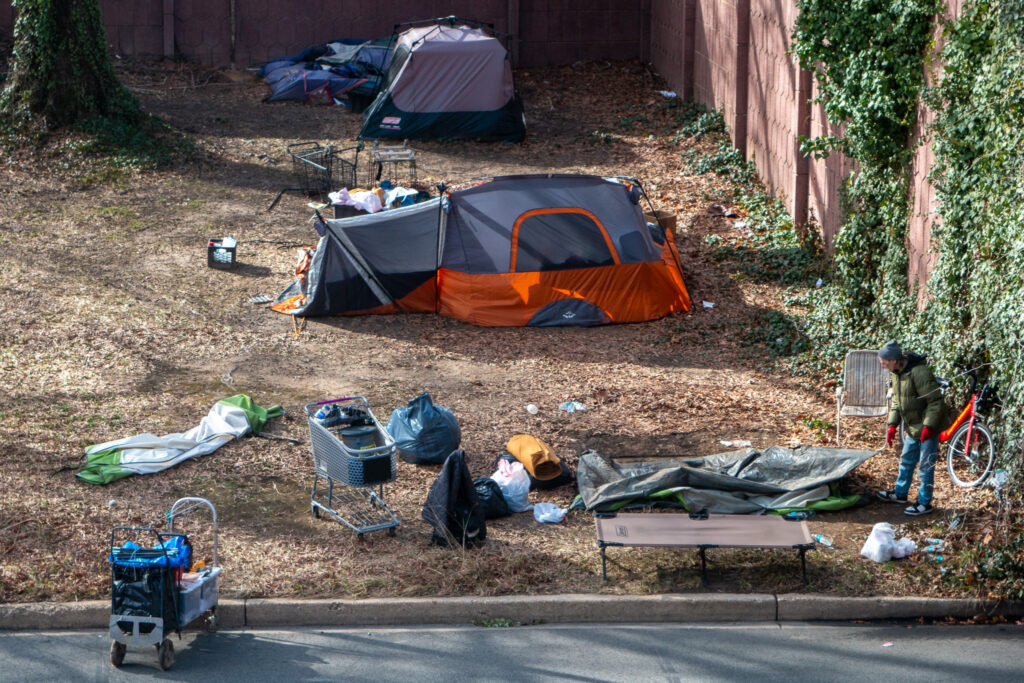
March 7, 2025 – While city workers and police officers wait nearby, one of the E Street Expressway encampment residents works to pack up his tent and belongings before the clean-up begins.
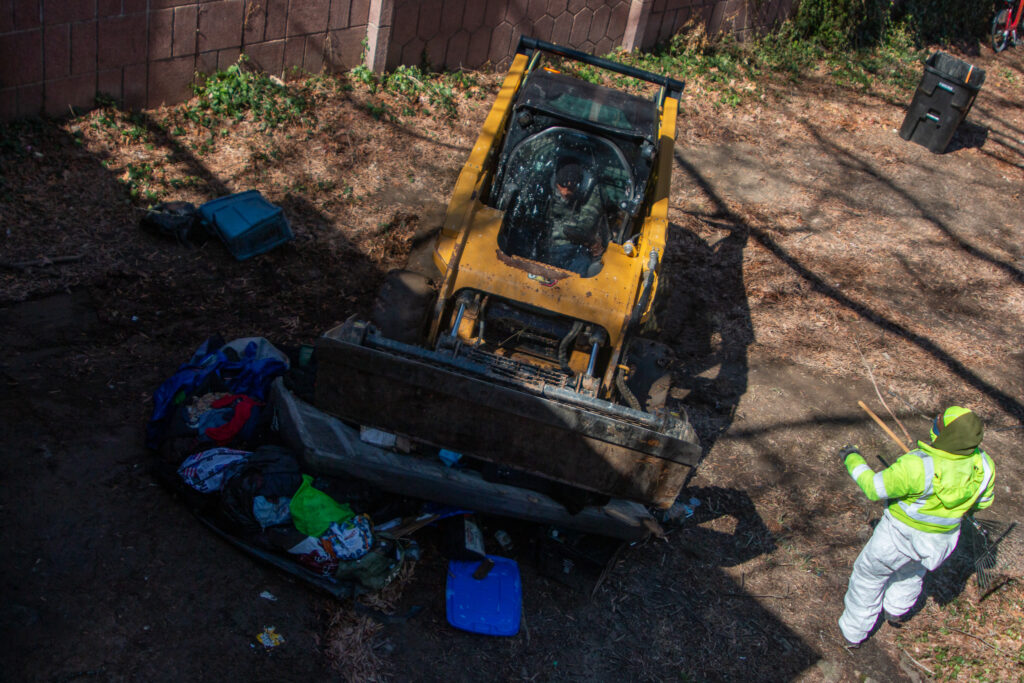
March 7, 2025 – A city worker pilots the CAT Track Loader, crushing and grabbing a pile of belongings during the E Street Expressway clean-up.
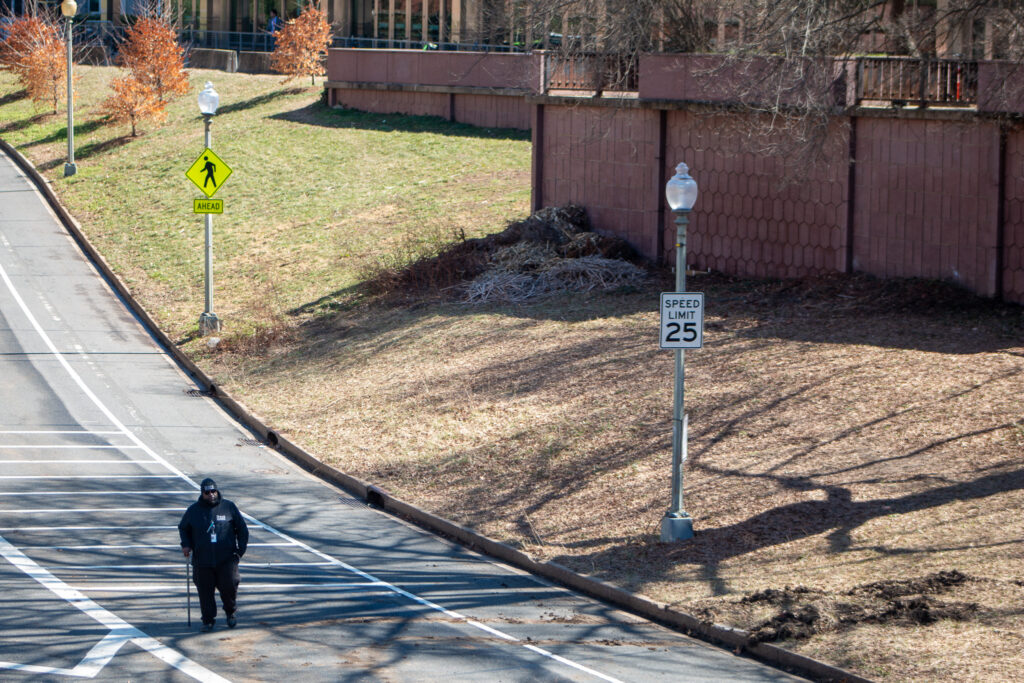
March 7, 2025 – Jamal Weldon Sr. from the DMHHS encampment team stands beside the E Street clean-up area after all tents and graffiti were removed.
Encampment updates: Most closures postponed due to cold weather
Excerpt: D.C. closed two encampments in early February, after rescheduling several times due to the cold weather.
In addition to the closures, the city’s Office of the Deputy Mayor for Health and Human Services (DMHHS) also conducted one full cleanup and rescheduled two major encampment closures, one in Brentwood and one in Foggy Bottom, to mid-March due to weather concerns.
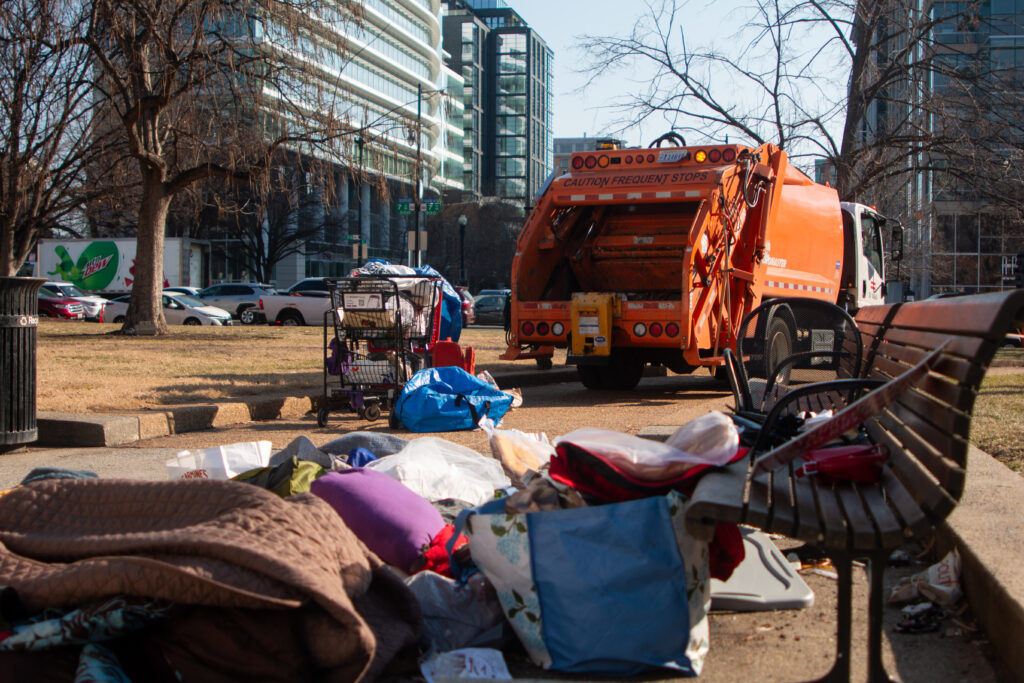
Feb. 4, 2025 – The resident at the Carnegie Library encampment sorted her items into two piles before DMHHS conducted their clean-up.
Encampment Updates: NoMa encampment closed after fire
Excerpt: In November, the Office of the Deputy Mayor for Health and Human Services (DMHHS) closed four encampment sites in D.C., displacing at least seven people experiencing homelessness.
One of the people who had to find a new place to sleep was Eric, a 45-year-old man who has lived in the DMV for the past six years. Five months ago, Eric began advocating for other vulnerable and homeless people. He said he wants to ensure they have a say in changes that affect their lives, rather than having others make decisions for them.
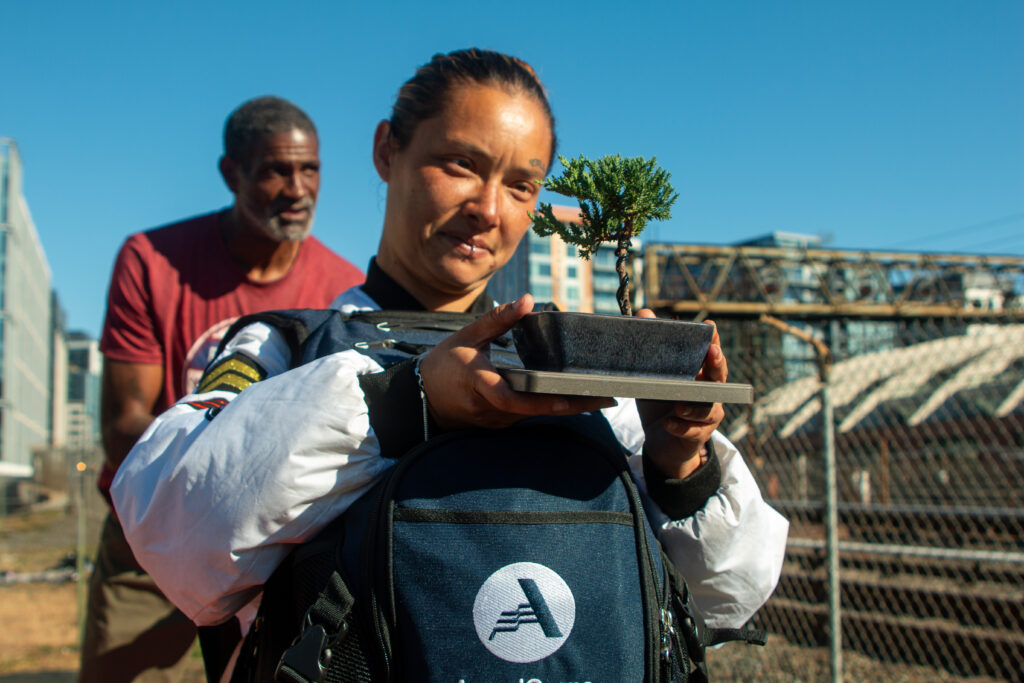
Nov. 8, 2024 – Angel holds her bonsai tree while preparing to move to a new encampment site. She loves to find special things to make her and Bart’s encampment more homey.
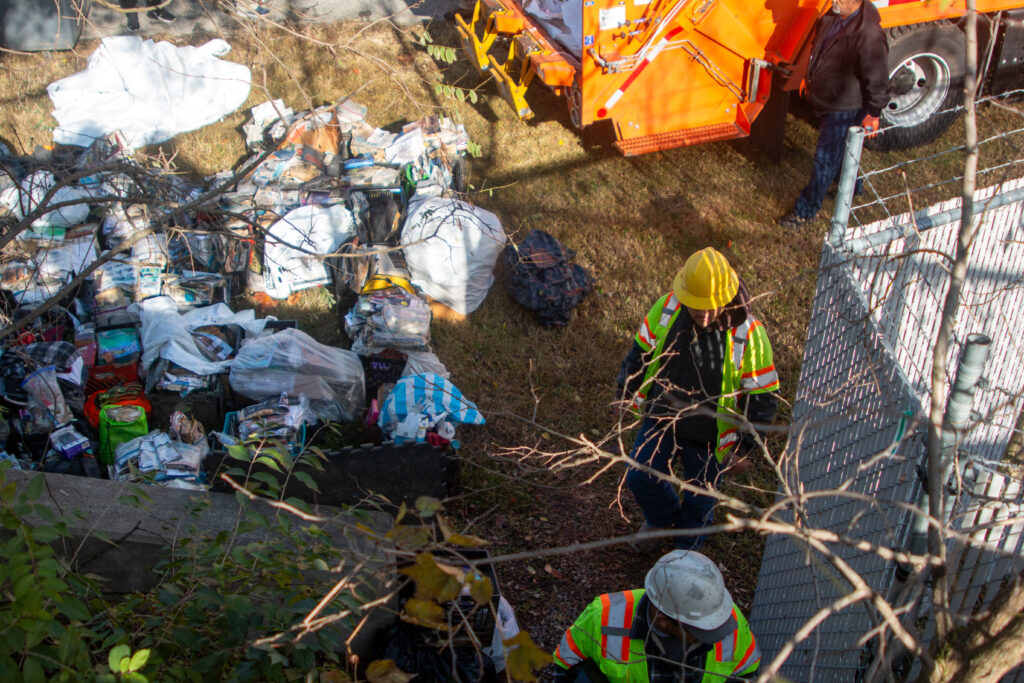
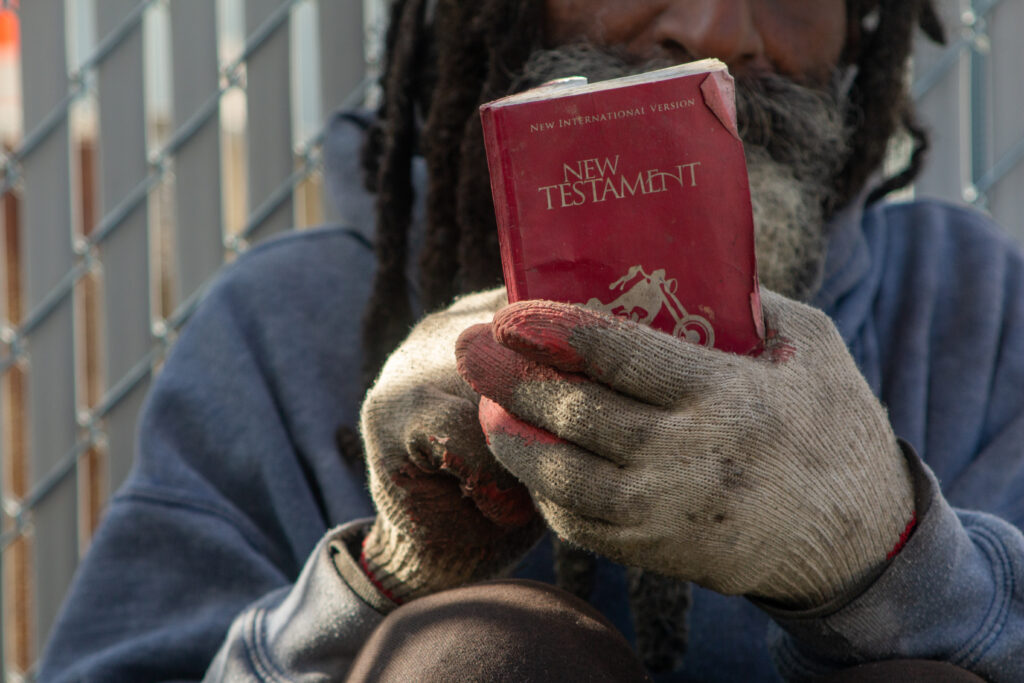
Nov. 21, 2024 – Looking for guidance, Eric read from one of his Bibles after city workers closed his encampment in Anacostia.
Print Edition Cover Story Nov. 20, 2024 – Wherever the wind blows, his ink pens follow

Excerpt: Standing on the steps of Grace Episcopal Church in Northwest D.C., Jeff watches his dogs hunt for rats. The sunny, cloudless day matches the feeling of contentment that Jeff exudes — there have been many ups and downs, left and right turns in his life, but his faith and art remain constant.
Jeff, who introduced himself by only his first name, has lived in D.C. off and on throughout his adult life, experiencing homelessness throughout his time in the city. He talks about his family, his personal struggles, and most importantly, the art he has created and carried with him throughout his life.
While he’s battling his third bout with cancer, art continues to console him – it’s been his way of escaping and surviving from as early as he can remember.
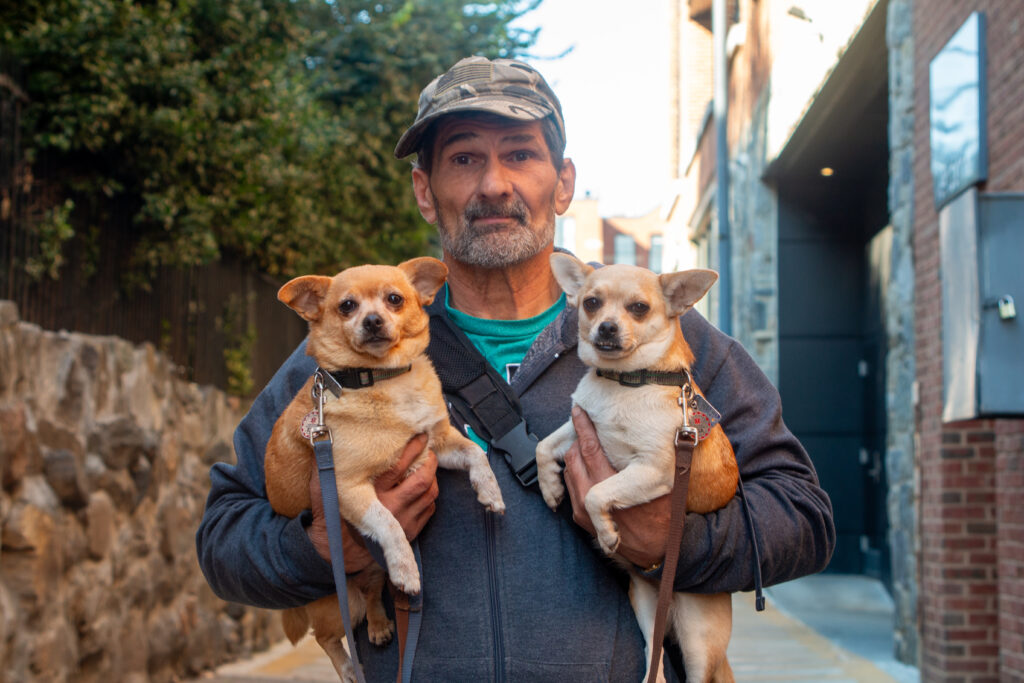
Oct. 30, 2024 – Jeff poses near Grace Street Church with his dogs Puppet and Luna. His dogs mean to world to Jeff – he can always be found with them by his side.

Puppet sniffs Jeff’s stack of drawings on the steps of Grace Street Church while Tierra is interviewing Jeff.

Oct. 10, 2024 – Jeff pets his dogs while waiting for DMHHS to finish their cleanup at Whitehurst Hill – a large encampment near Georgetown. Residents moved all their belongings to the sidewalk while the city mowed the grass and cleared abandoned belongings.
Excerpt: D.C. closed three encampments from Oct. 9 to Oct. 24 and did what the city refers to as “full clean-ups” at five others. Across the month, city staffers trimmed grass, picked up trash, threw away tents, and even involuntarily hospitalized an encampment resident.

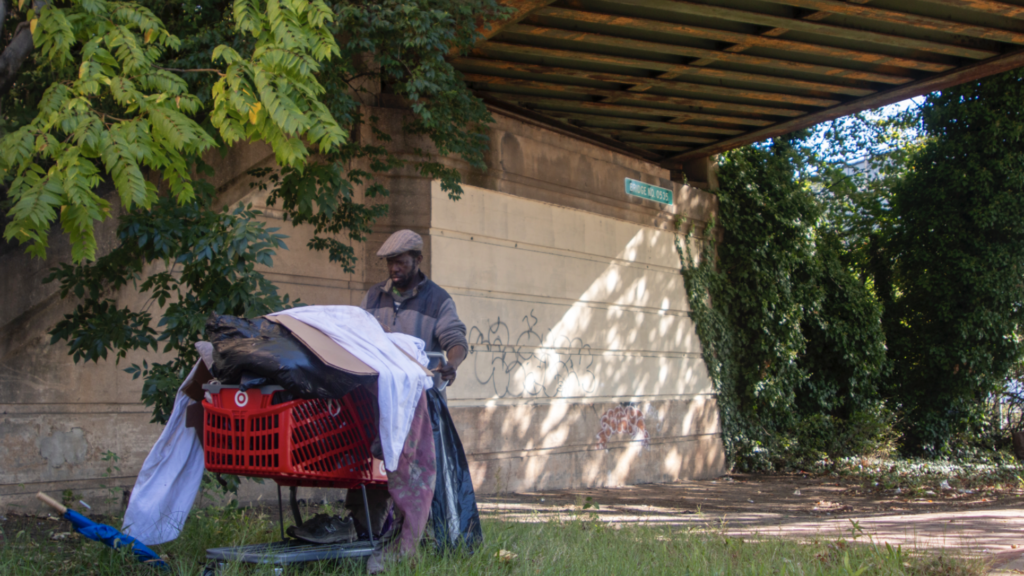
Oct. 9, 2024 – A man moves his belongings back to the New York and Montana Avenues NE underpass after a scheduled clean-up. He consented to photography but declined to share his name.

Oct. 10, 2024 – Residents from the Whitehurst Hill encampment waited on the sidewalk with their belongings while DMHHS cleaned up the hill and mowed the grass.
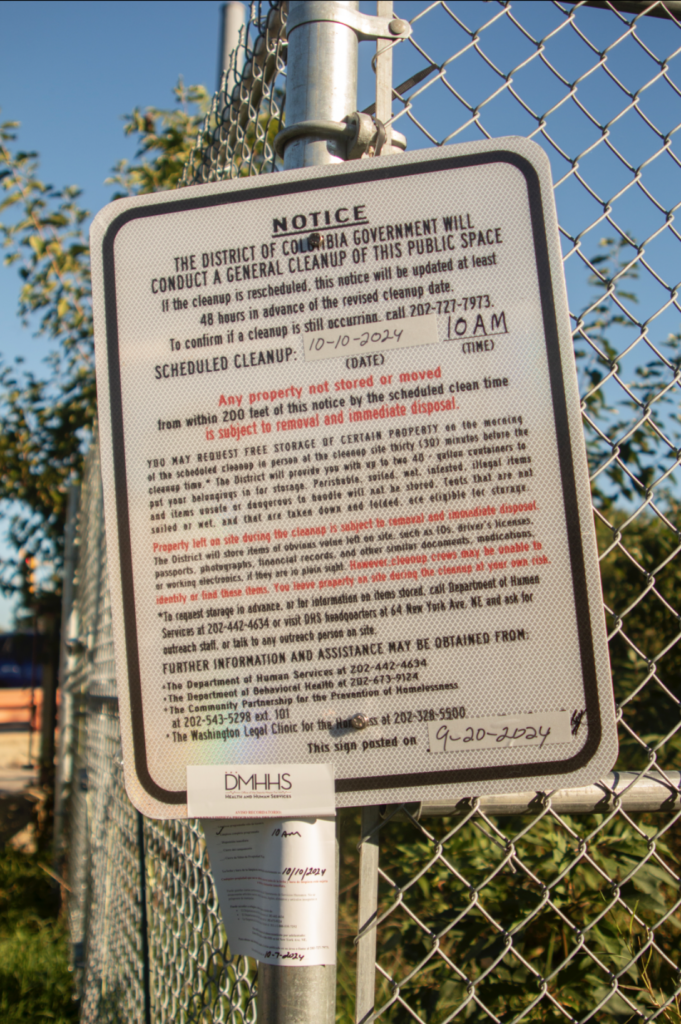
Oct. 10, 2024 – Signs from Whitehurst Hill from DMHHS. The smaller sticker sign attached at the bottom is the Spanish language sign compared to the larger, metal English sign.
Encampment Update: Nine encampments closed so far this fall
Excerpt: D.C. closed nine encampments, did “full-clean ups” at six others, and postponed two scheduled closures due to bad weather between Aug. 27 and Oct. 8. This is an increase from the same period in 2023, during which D.C. closed two encampments and did five clean-ups.
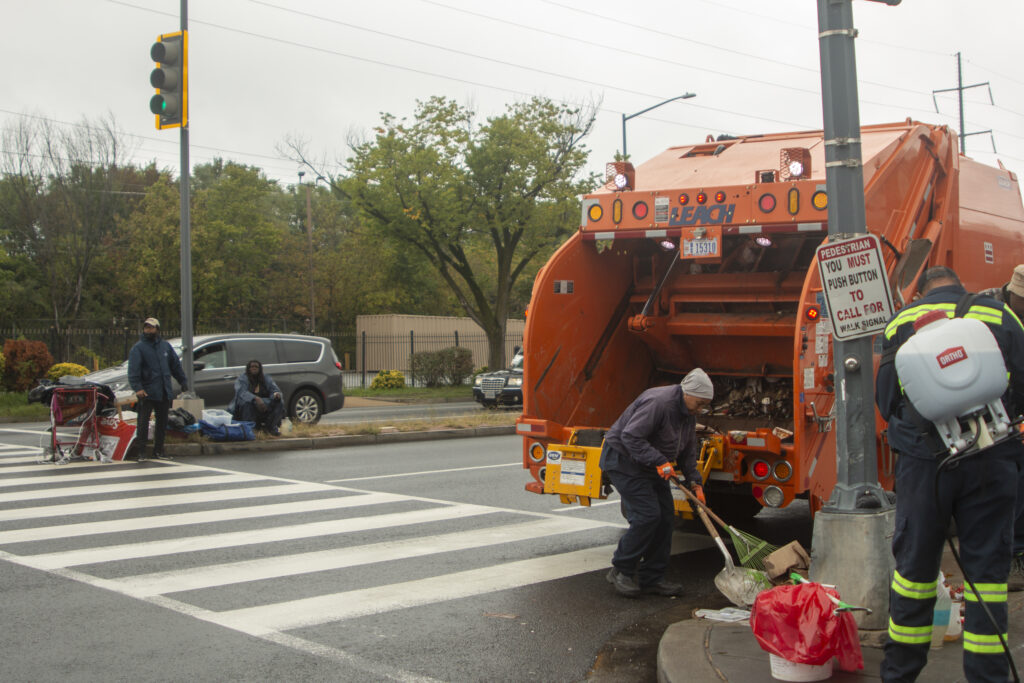

Oct. 2, 2024 – Leon watches as city workers remove debris and sanitize his encampment. Before the clean-up, Leon used shopping carts to move his belongings across the street.

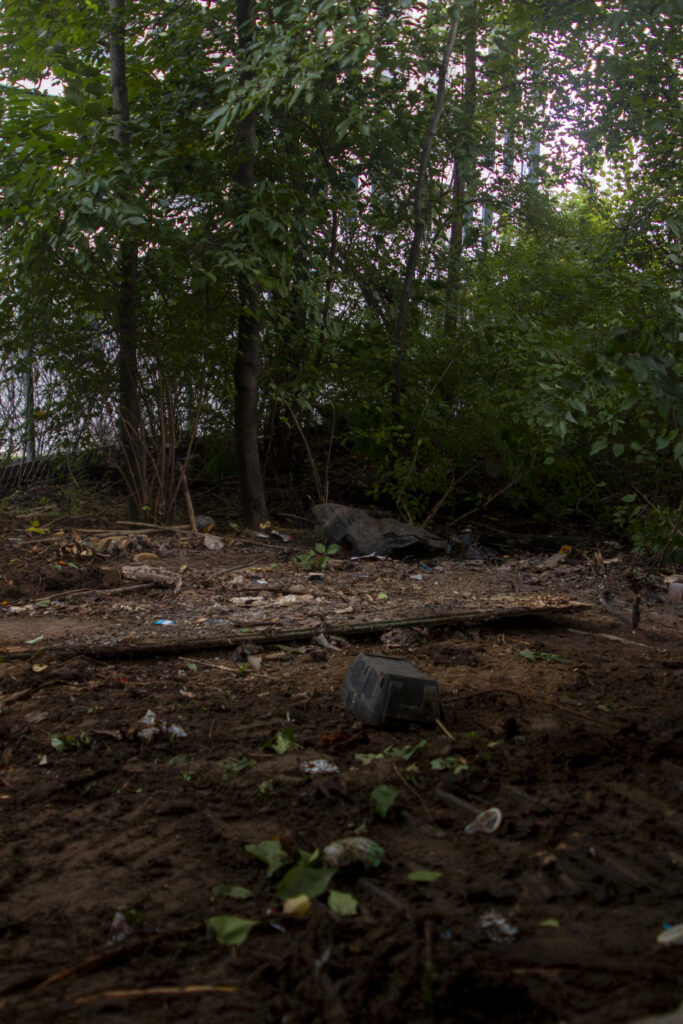
Oct. 3, 2024 – Before and after photos of one of the tents from the 1280 Union St. NE encampment full clean-up.
Read more at Streetsensemedia.org
